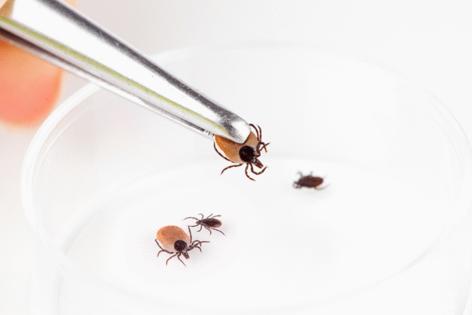An uptick of ticks in Washington? Study of trail reports to help track sightings
Published in News & Features
Tick sightings are on the rise in Western Washington, according to research conducted by a University of Washington master’s degree student.
Thanks to that same student, there’s now a system to help track where people are encountering ticks on trails across the state.
According to an April 7 news release from the Washington Trails Association, UW Master of Public Health student Alex Eisen worked with the state Department of Health to evaluate WTA’s trip reports to help determine where people are seeing ticks in Washington.
This led to Eisen and DOH developing a code to automate the process of reviewing trip report data for tick sightings.
“WTA’s trip reports help hikers know what conditions are like on trails across the state,” according to the news release. “Daily, members of the public write about what they saw on trail, from trees being down to how bad the bugs were. Often — especially in the spring — they note whether they encountered ticks.”
According to the release, Eisen wondered whether trip report data could be used to help better understand the spread of tick species that could carry diseases such as Lyme disease and Rocky Mountain Spotted Fever.
She was also curious whether there was a correlation between former wildfire perimeters and tick habitat, since the first thing to grow back after a wildfire is often brushy or light woody vegetation. That’s the prime environment for ticks to thrive in, according to experts.
Eisen created the tool for DOH last year as part of her degree program. It evaluates WTA trip reports for mentions of ticks and which trail they were on, and compares tick presence year over year since 1998, the beginning of WTA’s digital trip report archive.
Eisen’s research didn’t determine a definitive connection between wildfires and tick habitat, but it did track an apparently growing presence of ticks in Washington.
“This could be partially due to an increase in trip reporting, as the number of trip reports increased as the internet became more commonly used,” according to the release. “But tick habitat is also spreading.”
Ticks have been spotted in more parts of Washington in recent years; recent trip reports document sightings in the Issaquah Alps, the Yelm-Tenino area, and the Olympic Peninsula.
A rise in tick sightings has public health implications, according to the release. As tick habitat changes, people previously less used to recreating in tick country may be unsure how to prevent tick bites and associated diseases if they encounter a tick on a trail. Knowing where that is happening helps focus the Department of Health’s educational efforts.
This year, DOH is increasing tick surveillance in Island and Kittitas counties due to a lack of information in those areas about western black-legged ticks, which can carry the bacteria that causes Lyme disease as well as other pathogens.
“One of the best ways to prevent tick-borne diseases is to know where and when to expect ticks and then take steps to reduce your exposure, like applying an EPA-registered tick repellent to exposed skin and performing thorough tick checks after outdoor activities,” Dr. Hanna Oltean, senior epidemiologist at WA DOH, said in the release.
“Reports from hikers help us at DOH understand tick distribution in Washington and get the message out.”
Members of the public are encouraged to write trip reports if they encounter ticks on their hikes at wta.org or on WTA’s app.
The Department of Health can also receive online tick encounter reports and identify ticks if they are sent in, though ticks are not tested for the presence of pathogens.
_____
© 2025 The News Tribune (Tacoma, Wash.). Visit www.TheNewsTribune.com. Distributed by Tribune Content Agency, LLC.







Comments